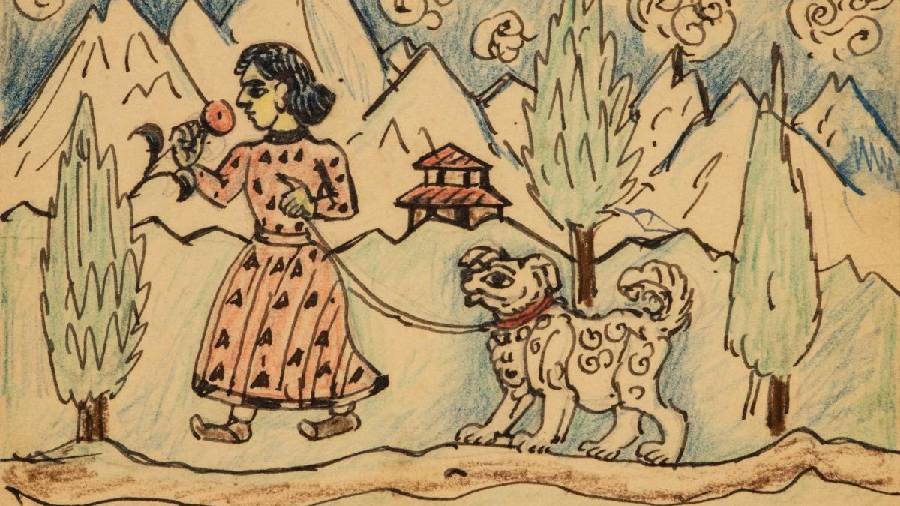On top of the postcard is a pen-and-ink drawing of Lady Pertelote and her companion, Chanticleer, enclosed within a square. Beneath are the following lines written in Bengali in a bold hand: “Babli I have received your paintings. They are great. If you send me your paintings I too shall send you my work. Grandpa. Nandalal Bose.” The year was 1957. Thus began a correspondence between the little girl, Babli, and one of the pioneers of modern Indian art.
About 40 of these postcards that Nandalal Bose (1882-1966) had sent to Babli — she was born in 1953 — along with 48 others from different collections were displayed in an eponymous exhibition (January 27-March 18) curated by Debdutta Gupta and hosted byAkar Prakar. This is the third exhibition of Nandalal’s postcards to be held in Calcutta and the second in this gallery. Like other Santiniketan-basedartists, such as Benode Behari Mukherjee, Nandalal often used tosend postcards with drawings or minuscule paintings to friends, students and relatives. But these are possiblythe only postcards whose recipientwas a little child of four, and are,therefore, quite unique.
The other postcards — many belonging to the 1930s — are like eloquent visual diary entries on life in and around Santiniketan. Nandalal’s medium was either pen and ink or brush and ink. He did his minuscule drawings of flora, the sculpture of a coiffured dancer installed on the Konark temple, terrace farming, a charming gas lamp post eclipsed by the branch of a tree in a Calcutta neighbourhood, a bovine mother’s love, poultry snacking in a field, life in the hills, a vulture waiting silently on a branch for its prey never to wake up, a bullock cart laden with goods passing through a barren, undulating land, and some other pastoral scenes with the adroitness and lightness of touch worthy of a disciple of Abanindranath Tagore.
On a lighter vein, his tiny paper collages poked fun at the Anglicised girls of the Dow Hill School and the crone wearing a coquettish bow on her hat. But when he wrote to Babli, Nandalal turned into the affectionate grandfather who had taken both the child and her single mother — his favourite student who went on to be an art teacher in leading schools — under his wing. Picasso and Klee may have sought to revert to the simplicity and straightforwardness of child-like art to make radical art, but Nandalal, well into his 70s then, only wanted to make the child happy with his tiny drawings. He did some collages too, which he coloured in pastel shades. A delightful powder blue teddy with a red ribbon tied around its neck. A little girl walking a large, white, fluffy dog with snow-capped peaks behind them (picture). And a naïve drawing of a double-storey hut with two trees standing guard on either side. Fish swim in a pond in front. A dog scampers by. The sun shines in the sky above the range of hills, and all’s right with the world.
Unlike the avant-garde artists of the West, Nandalal’s only intention was to make the child smile. In this, he came close to Rabindranath Tagore who wrote Se (published in 1937) to entertain his granddaughter, Pupedidi. Both men were childlike at heart.











